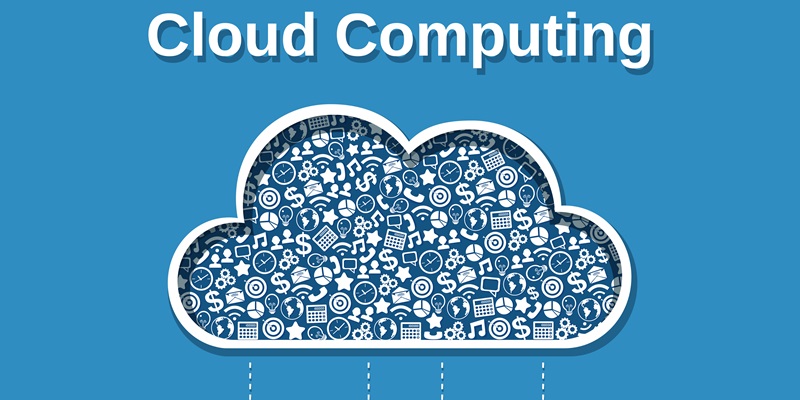The Transformative Impact of Software-Defined Data CenCloud computing has revolutionized the way organizations store, process, and manage their data. This technology has provided unparalleled flexibility, scalability, and cost-efficiency to organizations of all sizes. Within this realm, software-defined data centers (SDDCs) have emerged as a game-changer, transforming how organizations approach their data center infrastructure.
Definition and Overview of Software-Defined Data Centers (SDDCs)
A software-defined data center is an infrastructure that virtualizes and abstracts all the elements of a traditional data center. It separates the control plane from the physical hardware, allowing for enhanced flexibility and agility in allocating resources. By decoupling the software from the underlying infrastructure, SDDCs enable organizations to dynamically provision and manage their data center resources based on their specific needs.
Exploring the Benefits of Adopting SDDCs in Cloud Computing
One of the primary benefits of adopting SDDCs in cloud computing is the unparalleled flexibility it offers. Traditional data centers often require extensive manual intervention to scale resources up or down. However, with SDDCs, organizations can dynamically allocate resources in real-time, scaling their infrastructure to meet their changing demands. This flexibility eliminates the need for over-provisioning, resulting in significant cost savings.
Virtualization and Abstraction of Traditional Data Center Elements
SDCCs virtualize and abstract all the components of a traditional data center, including servers, storage, and networking. This abstraction layer allows for greater resource utilization, as organizations can pool their resources and allocate them based on demand. It also simplifies hardware management, as changes can be made at the software level without impacting the underlying infrastructure.
Seamless Resource Allocation and Management Across Multiple Cloud Environments
In the era of multi-cloud environments, SDDCs play a crucial role in enabling seamless resource allocation and management. With SDDCs, organizations can easily extend their data centers across different cloud providers and manage resources as a unified whole. This level of flexibility allows organizations to choose the cloud services that best meet their specific requirements without being locked into a single vendor.
Optimizing Resource Utilization and Improving Performance Through SDDCs
By virtualizing and abstracting data center elements, SDDCs enable organizations to optimize resource utilization, leading to cost savings and improved performance. Resources can be allocated on-demand and scale automatically, ensuring that workloads are efficiently distributed across the infrastructure. This dynamic allocation drastically reduces wasted resources, resulting in improved efficiency and lower operational costs.
Enhancing Security Through Centralized Control and Visibility
SDDCs enhance security by providing centralized control and visibility over the entire data center infrastructure. With traditional data centers, managing security across different hardware components and environments can be complex and time-consuming. SDDCs centralize security policies, enabling organizations to implement consistent security measures and monitor threats from a single vantage point. This centralized approach bolsters security while simplifying management.
Simplifying Management and Reducing Operational Complexity with Automation
SDDCs simplify management and reduce operational complexity by automating routine tasks and streamlining processes. Traditional data centers require extensive manual intervention to provision resources, configure hardware, and manage workloads. SDDCs automate these tasks, enabling IT teams to focus on strategic initiatives rather than mundane operational activities. Automation also ensures consistency and reduces the risk of human error, further enhancing operational efficiency.
The Transformative Impact of SDDCs on Cloud Computing
Software-defined data centers have a transformative impact on cloud computing. They enable organizations to achieve greater efficiency, scalability, and agility in managing their cloud infrastructure. By virtualizing and abstracting data center resources, SDDCs empower organizations to respond quickly to changing business needs, optimize resource utilization, and improve overall performance.
Achieving Greater Efficiency, Scalability, and Agility in Managing Cloud Infrastructure
The adoption of SDDCs in cloud computing brings several benefits, but perhaps the most significant is the ability to achieve greater efficiency, scalability, and agility. SDDCs enable organizations to dynamically allocate and scale resources, ensuring optimal performance while minimizing costs. This flexibility allows businesses to respond rapidly to market demands, launching new services or scaling existing ones with ease.
The Increasing Importance of SDDC Adoption for Organizations in the Digital Age
As cloud computing continues to evolve, the adoption of SDDCs will likely become increasingly crucial for organizations seeking to stay competitive in the digital age. Traditional data center architectures are often inflexible, hindering an organization’s ability to innovate and adapt. SDDCs provide the agility and scalability needed to support digital transformation initiatives and effectively respond to emerging technologies.
In conclusion, software-defined data centers are revolutionizing the way organizations approach their data center infrastructure in the era of cloud computing. The unparalleled flexibility, scalability, and cost-efficiency offered by SDDCs enable organizations to optimize resource utilization, enhance security, simplify management, and reduce operational complexity. As cloud computing continues to evolve, the adoption of SDDCs will be crucial for organizations striving to stay competitive and achieve digital success. Embracing SDDCs empowers businesses to unlock the full potential of the cloud, enabling them to innovate, scale, and thrive in the rapidly evolving digital landscape.

